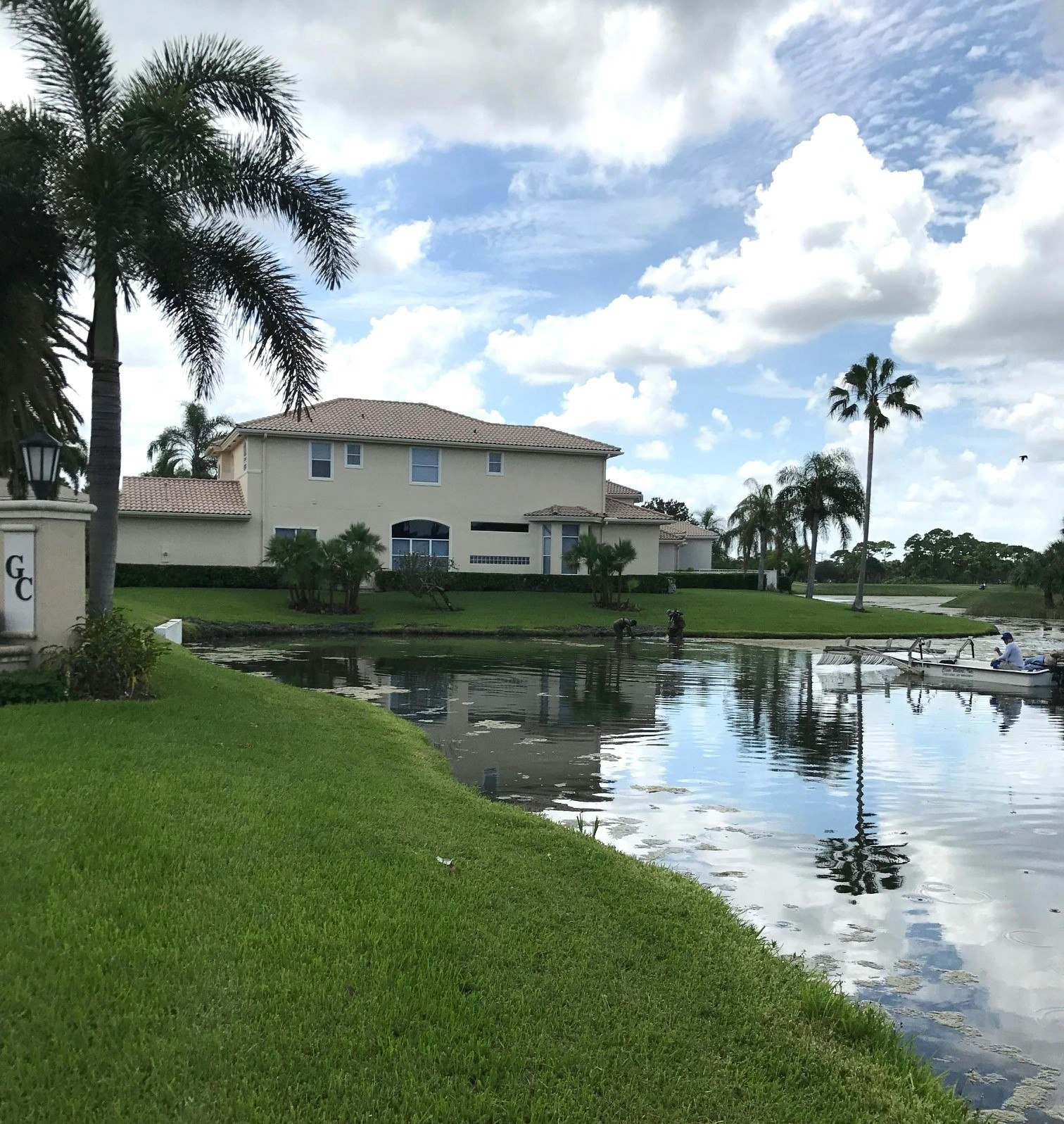PGA National Marsh and Preserve Maintenance Program

PGA National features an extensive surface water management system encompassing 196 acres, which includes over 100 lakes and canals. Integral to this system are approximately 65 acres of created marsh wetlands, established primarily between 1980 and 1986. These marshes, now 40 years old, play a crucial role in maintaining the ecological balance of the area, supporting biodiversity, and contributing to the overall health of the surrounding environment. The extensive surface water bodies are monitored regularly, with manual removal and targeted herbicide application used as primary tools for controlling aquatic invasive plants and algae.
One of the primary concerns throughout PGA National is the excess nutrient levels, particularly nitrogen and phosphorus, which originate from runoff associated with lawn care and golf course maintenance. Leaf litter and vegetation debris often ends up in the water management system through road drainage and will also act as a source of excess nutrients. These nutrients, while essential for plant growth, are also essential for algae growth, and can lead to an overabundance of algae in the lakes. Excessive algae growth, as well as the decomposition of algae, has the potential to decrease oxygen levels in the water, negatively impacting aquatic life and the overall water quality.
Water level fluctuations present another significant challenge. Seasonal changes, rainfall variability, and water usage for irrigation can cause lake levels to rise and fall. During periods of lower water levels, typically in Spring, areas of the created marshes and lake edges are exposed. While these marshes are vital for maintaining biodiversity and reducing nutrient load in the water column, their exposure can lead to the growth of invasive species, which can outcompete native plants and disrupt the balance of the ecosystem. To preserve the ecosystem function of the created marsh wetlands, invasive weeds need to be controlled and the plant material should be removed off site. This work load draws the eight-man labor crew away from other areas that need normal maintenance of encroaching weeds and dead plant material. It can take several months for the crew to catch up with the removal of these invasive weeds.
Old, shallow, and narrow water bodies with significant organic matter and muck accumulation present unique challenges for lake management, particularly in controlling algae production. These lakes often have high levels of organic material settled at the bottom, which gradually decomposes, releasing nutrients into the water. These nutrients create ideal conditions for algae blooms. In shallow lakes, sunlight can easily penetrate to the bottom, further promoting algae growth across the entire water column. Managing these water bodies is particularly difficult because the accumulated muck and organic matter continuously adds to nutrient loading in the water. The shallow depth means that water temperatures can fluctuate more rapidly which can stress aquatic life, contributing to favorable conditions for algae growth. Moreover, the narrow shape of the lakes can restrict water circulation, leading to stagnant areas where algae can thrive.
Managing the surface water management system at PGA National presents a complex set of challenges that require ongoing attention and adaptive strategies. The aging lakes and marshes, with their accumulated organic matter and fluctuating water levels, contribute to the proliferation of algae and the spread of invasive species. Nutrient runoff from surrounding areas further exacerbates these issues, complicating efforts to maintain water quality and ecological balance. Despite these difficulties, our management team is committed to implementing best practices, monitoring changes, and collaborating with experts to protect and preserve the integrity of these vital water bodies.
